Topics:
Never Miss a Beat - Get Updates Direct to Your Inbox
FILTER:


The Four Essential Steps to Prepare Your SaaS business for a Successful Sale
By Quiet Light
To say that there’s a lot involved when it comes to preparing your SaaS business for sale is a bit of an understatement. Before going to market, several essential tasks lie ahead: defining your goals, considering your customers, getting a comprehensive business valuation, organizing your finances and other records, and refining your pitch for potential buyers, to name a few.
At this point, you might be asking yourself, “What steps should I take to prepare my SaaS business for sale”?
We’re here to help. By understanding and implementing the best practices for preparing your business for market, you can position yourself for a smooth and profitable SaaS exit.
In this article, we explore four key strategies for positioning your SaaS venture well, including:
- How to gain a comprehensive understanding of your SaaS business’s value
- High-leverage steps you can take to strategically increase the value of your business to attract high-quality buyers
- How to perfect your sales pitch to showcase your SaaS business in the best light
- What you need to do to prepare for the due diligence process and ensure a seamless transition
Related Articles:
Avoid These Six Common Mistakes When Selling Your SaaS Business
Eight Key Factors to Consider to Maximize the Value of Your SaaS Business


You Need to Know What Your SaaS Business is Worth
The first step in preparing to sell your SaaS business is determining exactly how much your company is worth. First let’s take a look at valuation methods. Then, we’ll dive deeper into factors that can impact the value of your SaaS company.
Valuing your SaaS business with the SDE Method
Smaller SaaS businesses are valued based on an SDE multiple. Larger ones, on the other hand, use a revenue-based valuation multiplier after reaching a certain threshold.
Let’s take a closer look at the SDE valuing method, which has two key components: the SDE and the multiple.
SDE stands for seller’s discretionary earnings—the pre-interest and pretax profits your business makes before you consider noncash expenses, one-time investments, owner benefits, and any unrelated discretionary expenses or income. In other words, SDE is the total amount of money your SaaS business generates for a single owner.
After you know what your SDE is, you multiply that number by the multiple. So if your business generates $125,000 in SDE and is valued at a 3x multiple, it’s worth $375,000 ($125,000 x 3 = $375,000).
The valuation process is crucial to preparing your SaaS business for sale. This is not a step to skip over or rush through. It’s easy to draw conclusions on your earnings and assume the multiple—you’re naturally biased towards your own hard work and dedication. But the truth is, there are a multitude of variables that all greatly influence the valuation of a SaaS business—variables that just can’t be accurately assessed with a simple online valuation tool.
When you’re selling your SaaS business, you might choose to work with a qualified business broker. A broker will take a close look at your business and carefully consider each element. The SaaS sales model, sales cycle, churn rate, growth rate, channel diversity, market environment, recent deal history, and many other factors all have their place in the valuation process.
Since businesses are typically worth quite a lot, even a slightly undervaluing could cost you tens or hundreds of thousands of dollars.
“The first step in preparing to sell your SaaS business is determining exactly how much your company is worth.”
Using Quiet Light’s Four Pillars of Value
When you go through the valuation process with Quiet Light, a knowledgeable business broker looks at every aspect of your business to determine how it lines up with our Four Pillars of Value. These pillars are:
- Growth
- Risk
- Transferability
- Documentation
Working with a business broker can ensure you calculate your SDE accurately and land on a purchase price that honors the business you’ve spent time and energy building.
Brokers can also help identify opportunities to grow the value of your company. Past and current growth trends have an impact on how prospective buyers perceive its value. Discovering new ways to grow your SaaS business can attract a higher sales price in the future. This is especially true if you want to sell within the next year.
The value of a SaaS business is also influenced by a variety of factors, and potential investors or buyers often consider the following aspects when assessing its worth:
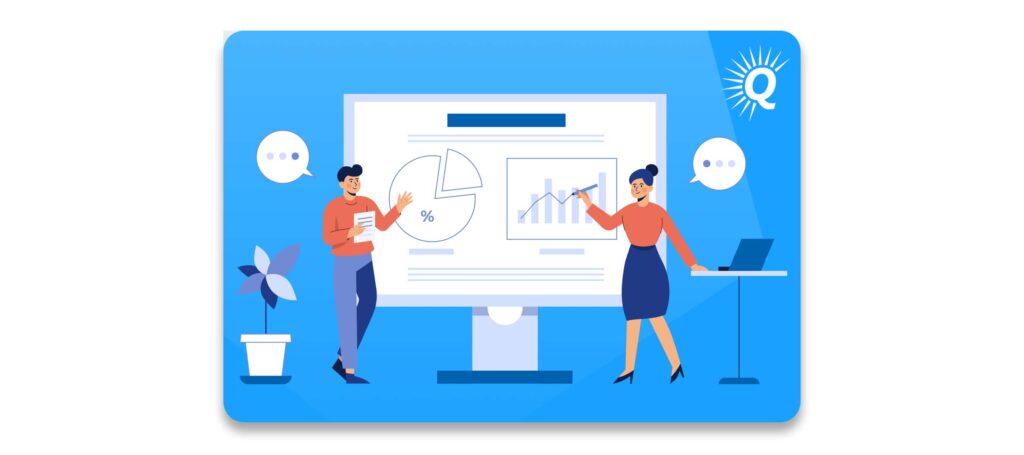

Revenue and growth
One of the primary factors determining the value of your SaaS business is its revenue and growth trajectory. Businesses with consistent and predictable revenue streams are generally more valuable to buyers, which means better deals for you as the seller.
Investors often look at metrics like Monthly Recurring Revenue (MRR), Annual Recurring Revenue (ARR), and growth rate over time. MRR is a measure of the revenue that your company receives on a recurring monthly basis.
As a subscription-based business, the Monthly Recurring Revenue (MRR) is the vital force that sustains your SaaS company. A strong monthly revenue can tell a buyer a lot about the health of your business.
Your MRR metric is also going to impact your valuation, since the process uses a multiple of your discretionary earnings. For a large SaaS company, SaaS valuation uses a revenue multiple.
Some SaaS businesses use Annual Recurring Revenue instead of MRR. Which metric to pay attention to usually comes down to whether you bill customers monthly or annually. But regardless of when customers pay for your product, higher revenue and strong growth potential indicate a more valuable business.
Churn rates
Your SaaS business follows a subscription-based business model. That means that potential buyers are paying close attention to your customer churn rate. This is the number of customers who cancel their subscriptions in a given time period divided by the total number of remaining customers.
A different method to measure churn is to look at the lost revenue that a company experiences due to customer loss. This is often referred to as revenue churn or MRR churn.
Even if you’re an expert at customer acquisition, your SaaS business will struggle to remain profitable if you have a high churn rate. If you want to see any significant growth rate in your business, having a low churn rate is a necessity. And it’s what prospective buyers are going to be looking for when evaluating your business.
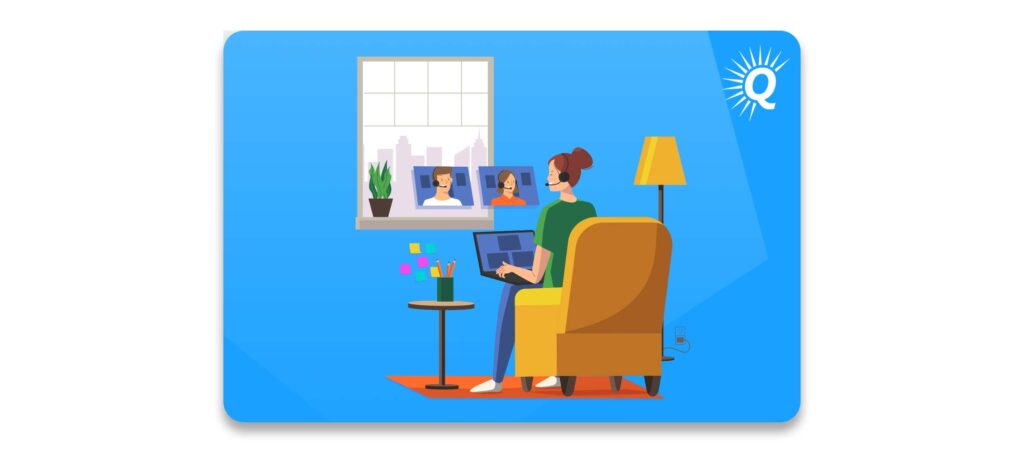

Customers cancel their subscription if they’re unhappy with your SaaS product or your customer service team doesn’t help them realize the benefits of the product. In other words, churn is often a reflection of customer satisfaction. To reduce your churn rate before listing your SaaS business for sale, improve the customer onboarding process and focus on providing stellar customer service.
If a customer is only using a small portion of your SaaS service that they purchased, they’re more prone to cancellation. Providing accessible education can drive up your customer engagement and ensure they’re using your SaaS products to their full potential—all while reducing that churn rate in the process.
“To reduce your churn rate before listing your SaaS business for sale, improve the customer onboarding process and focus on providing stellar customer service.”
Acquisition channels
Another SaaS-specific aspect that both business owners and potential buyers need to pay attention to is acquisition channels. The diversity (or lack thereof) of acquisition channels has a large influence on the risk of a company. And with great risk comes reduced business value—and vice versa.
Acquisition channels are the methods that you use to acquire new customers. This could include website traffic, social media marketing, app reviews, and more. When you have a diverse set of customer acquisition channels, you incur less risk than a SaaS company that only relies on one or two main customer acquisition channels.
It’s also crucial to keep in mind that the cost of acquiring a new customer goes up in proportion to the competition faced within your specific industry and channel. Potential buyers are looking for a company that occupies a less crowded industry with low competition in common acquisition channels. A company that fits that description will be more attractive than a SaaS business that’s facing stiff competition for growth.


Technology and intellectual property
The underlying technology and intellectual property (IP) of your SaaS platform can significantly impact its value. Proprietary software, patents, or unique algorithms that give your business a competitive edge makes it more valuable for potential buyers. Robust and scalable technology is essential for long-term sustainability and growth potential.
Buyers will want to verify that you are the rightful owner of any intellectual property you claim. If there are any patents or trademarks you haven’t gotten around to registering, take care of that before listing your SaaS business for sale.
Business value, churn rates, customer experience, and intellectual property are often considered in combination, and their importance will vary depending on your specific business and market conditions. Other business elements such as market competition, brand reputation, team expertise, and market potential may also come into play when assessing the value of a SaaS business.
“The underlying technology and intellectual property (IP) of your SaaS platform can significantly impact its value.”
Why You Need to Focus on Growing the Value of Your SaaS Business Before You Sell
Using the SDE Multiple Method and assessing your customer analytics can help you calculate your current SaaS business value. But before you list is also the perfect time to think about what you can do to grow those numbers.
Entrepreneurs who work on boosting their business value before listing their business can see many benefits—both now and in the future. Some of those benefits include:
- Increasing your earnings potential
- Optimizing your business operations
- Owning a stable business that can survive a rocky economy
- Receiving a higher purchase price when you do decide it’s time to sell


You’ll boost your earnings
When you increase the value of your business, you can also increase your income potential. Growing your SaaS business can provide extra cash flow that you could use to invest in your business. Or you could put those extra funds towards a personal goal—like that vacation that’s been on your bucket list for a decade or saving for your kids’ college funds.
When your business earns more money, that also means you don’t have to spend as much time checking dashboard metrics and answering emails. Greater financial freedom could also free up your time so you can pursue your passions, hobbies, and dreams.
You can optimize your day-to-day operations
Business owners who focus on growth know that streamlined operations are crucial. Whether you own a massive SaaS startup or have a small business, companies with optimized operations are easier to both manage and grow.
Streamlined operations also give you a bigger vantage point as an entrepreneur. Maybe you’re ready to get out of the day-to-day grind of SaaS product development, customer service, and competitor analysis. This is a great season to focus on growing your business while preparing for a successful exit.
You’ll own a more stable and resilient business
As a SaaS business owner, you have to plan for things that are totally out of your control. For example, data breaches or compromises could leave you scrambling to assist customers and solve security weak points. But businesses that are working to reach their maximum value are usually more stable than those that don’t have an eye on growth.
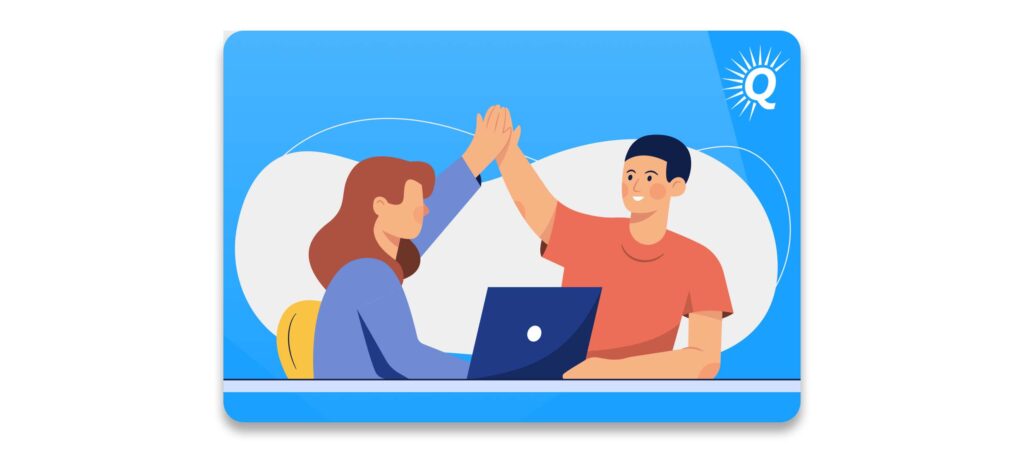

If you’re considering selling your SaaS business, you can focus on growing and maximizing your recurring revenue. Those are just two ways to increase your business stability and build value simultaneously.
When you decide to sell, you can receive a higher purchase price
It’s exciting to see your SaaS scale and grow right now, but your focus on growth has implications in the future, too. The more your business value increases, the more money you can receive from a buyer when you decide to make your exit.
Higher business value gives you a great position to negotiate offers and agree upon better deal terms. Growing that final asking price is great motivation when it comes to building your brand and increasing business value.
Get a free, individually-tailored valuation and business-readiness assessment. Sell when you're ready. Not a minute before.Thinking of Selling Your Business?
How to Grow Your SaaS Business Value
Increasing the value of your SaaS business can make your company more attractive to both customers and potential buyers.
Remember the Four Pillars we use at Quiet Light to determine business value? Let’s take a look at those again:
- Growth
- Risk
- Transferability
- Documentation
Those pillars provide the perfect framework for creating a strategy to increase the value of your business.
“Increasing the value of your SaaS business can make your company more attractive to both customers and potential buyers.”
Increase growth trends
When your business growth is trending up, potential buyers can imagine a promising future. The main indicator of business growth is historical growth. So when growth prospects are backed up by historical data and SaaS analytics, buyers have a crystal clear map for the future after they sign on the dotted line.
Some practical ways that you can grow your SaaS business include:
- Implement a referral program to encourage existing customers to refer new customers
- Identify opportunities to upsell or cross-sell additional SaaS product features
- Offer free trials or freemium plans to attract potential customers
- Create valuable and educational content to showcase your expertise and address pain points of your target audience
- Prioritize customer success by providing excellent customer support, training resources, and onboarding experiences
Even if you don’t think you’ll want to sell your SaaS business for years, define a clear path of growth for your company. If potential buyers see room for growth, they’re more likely to make an offer that values the hard work you’ve put into building your business and creating quality SaaS products.
Lower your business risks
It’s exciting to look at what your business is doing well and identify ways you can grow. But it’s equally important to identify the weak points in your SaaS business. There are several ways you can lower risk for your company, including:
- Diversifying your revenue streams so you avoid relying heavily on one single customer or a limited amount of customers
- Implementing robust data security measures to protect customer data and ensure compliance with relevant data privacy regulations
- Establish regular data backups and have a disaster recovery plan in place to mitigate that impact of potential technical failures
- Keeping your SaaS products up to date with regular software updates and security patches to address vulnerabilities and bugs
- Monitoring your competitors and market trends so you can stay ahead of potential threats and identify opportunities
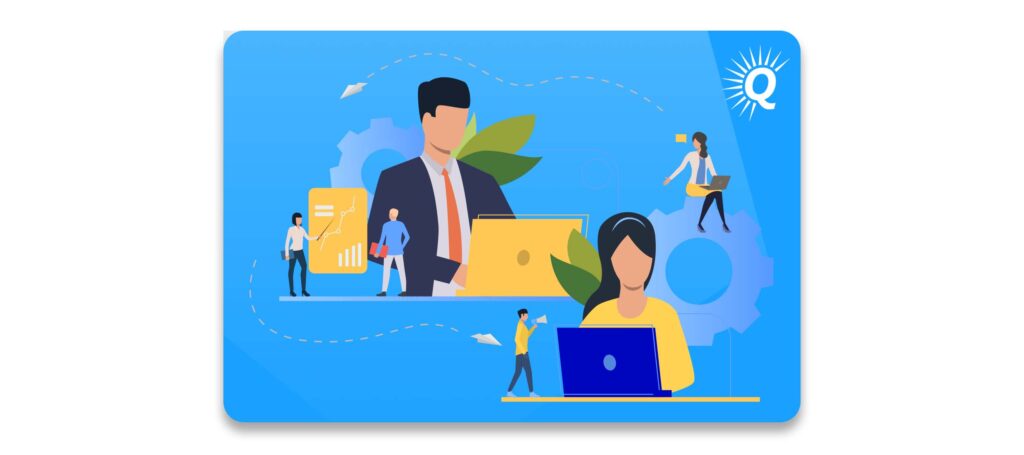

Look at your SaaS business as if you were a potential buyer. If someone is wanting to purchase a SaaS company, regardless of the niche, they’re looking for something with minimal risk. Buyers stand to lose a lot more in a deal than you do as the seller, and they might not be ready to navigate the same amount of risk that you are.
But decreasing risk for your SaaS business isn’t just for the benefit of a potential buyer. It also lowers your daily stress levels, boosts your business value, and increases the confidence that customers have in your products.
Line up a smooth transition for any buyer
When you’re developing a SaaS product, you more than likely have your ideal customer in mind. You consider the pain points they have and how your products can answer those problems.
If you’re thinking about selling your SaaS business, spend some time thinking about your company from the perspective of a prospective buyer. Imagine their first day behind the keyboard after the sale of your business is finalized. Would they know where important documentation and financial information is located? Do they know the ins and outs of your SaaS products? What about locating crucial customer analytics?
When your SaaS business can easily transfer to a new owner, it’s worth more to them. A potential buyer should be confident that they can handle everything from daily operations to big decisions smoothly from day one.
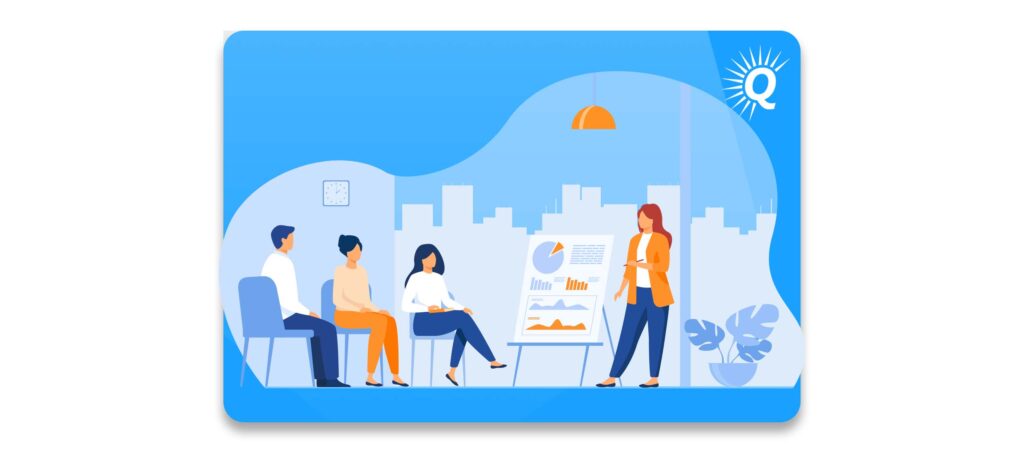

Get your documents organized
Your documentation tells the story of your SaaS business. If you want to increase the value of your business, you need to have your documents and systems in impeccable order.
If you don’t already, you need to have a system in place for organizing important business documents like bank statements, merchant statements, tax documents, and customer analytic reports.
Maybe your business has taken off and you’ve hired a team of employees, or you contract out certain tasks to freelancers. Information about how you run your team and the payment processes for contractors is also something a new owner will want to look through when examining your business details in the due diligence process.
One benefit of a smooth documentation system is that it makes for an easy and simple retrieval process when a buyer asks for more information. But it also increases the value of your SaaS business because organized documentation increases buyer confidence.
Polish up your sales pitch
After you have an accurate business valuation and a game plan for growth, it’s time to prepare for pitching your SaaS company to potential buyers.
Creating a compelling SaaS business pitch requires focusing on key aspects that will effectively convey the value and potential of your product or service. When you’re sitting down with potential buyers, you’ll be discussing everything from your business model to financial projections. Here are some essential things your pitch needs to include:
Your solution to problems in the SaaS market
Start by identifying the pain points and challenges that your target audience faces. Paint a picture for potential buyers of what your potential customer looks like and what makes them start looking around the SaaS market for a solution. You need to be able to clearly articulate the problem you’re solving and demonstrate that your product resonates with customers.


Once prospective buyers understand the problem, explain how your SaaS solution provides an effective and innovative way to solve these issues. Spend time highlighting the unique features and functionalities that sets your SaaS product apart from your competitors.
“Potential buyers are interested in profitable SaaS businesses with room for growth.”
Market opportunities
Do you nerd out over data and market research? This is your time to shine. Showcase the size and potential of your target market. Entrepreneurs who are interested in purchasing your SaaS business want to see evidence that there is a demand for your SaaS solution and that the market is growing.
Here is the place to include relevant statistics, market trends, growth trends for your business, and any customer insights you have that support your claims.
Your business model and revenue strategy
Potential buyers are interested in profitable SaaS businesses with room for growth. Outline your business model and how your SaaS offering generates profit. Explain your pricing strategy and whether or not you utilize a subscription-based or usage-based model (or a combination!). Clarify the projected customer lifetime value (CLV) and customer acquisition cost (CAC). These numbers need to demonstrate the viability of your revenue strategy.
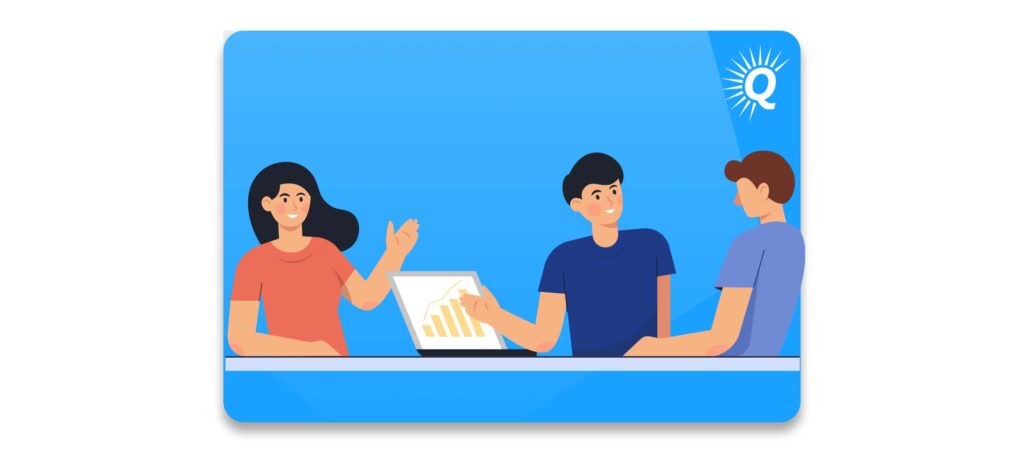

Your biggest milestones
You know that baby book that’s on your parents shelf back at home? The one with the dates of your first words, first steps, and that weird piece of hair from your first haircut? In many ways, this SaaS business is your baby. You’ve created it, poured your time and money into it, and have big dreams for its success.
Highlight the success you’ve achieved with your SaaS product. This could include user testimonials, case studies, pilot programs, partnerships, or any other significant milestones.
Naturally, you’re biased when it comes to your business. So back every success story with statistics that prove your point. Investors are more likely to be interested if they see evidence of market validation and progress.
By incorporating these key elements into your SaaS business pitch, you can effectively demonstrate the value of your offering and make a compelling case for investment. Create a compelling pitch that is concise, well-structured, and tailored to your target audience to maximize its impact.
Prepare For Due Diligence Today so Your Future Self Will Thank You
After you list your SaaS business for sale and have an official offer from a buyer, there will be some crucial steps left before the deal is done. One of those steps is the due diligence process. This process is when the buyer makes sure that your SaaS business is just as promising as you have told them it is.
Although legal due diligence can be intimidating, it boils down to two words: review and verify. The buyer will request documentation from you to review. Then, they’ll verify that information.
You don’t have to wait until you have an official offer to prepare for the due diligence process. Instead, you can take steps today to ensure that your SaaS business is well-organized and ready for any questions a potential buyer might have. Here are some steps to prepare your SaaS business for due diligence way ahead of time.
Trust us, future you is going to be so grateful.


Marie Kondo your legal and financial documentation
Marie Kondo’s approach to organizing a home focuses on choosing what to keep instead of focusing on what you need to purge. But her tidying up isn’t just for your linen closet or pantry. It very much applies to your business as well.
After all, we know that those random piles of paperwork on your desk or saved randomly in some email folder are not sparking joy for you right now.
Set aside some time to gather and organize all legal and financial documents related to your SaaS business. This will include licenses, contracts, financial statements, tax records, and any other relevant legal agreements.
Once you have that organization system in place, stick to it. Know exactly where you’ll put your tax return when you get it back from your CPA or where you store your bank statements. Having those documents readily accessible is going to save you time and reduce your stress. Your organization is also going to boost the confidence of potential investors.
Make sure your intellectual property and technology assets are organized
Clearly document your intellectual property (IP) assets, such as patents, trademarks, and copyrights. Ensure that you have appropriate agreements in place with employees, contractors, and third parties to safeguard your IP.
More than likely, your SaaS product relies heavily on technology. Be prepared to explain the architecture, scalability, and security measures to potential buyers.
Know your team
It’s important to be able to showcase the strengths and expertise of your team. Potential buyers want to know that your employees have the capability to execute the business plan and navigate changes effectively.
Be prepared to provide detailed and up-to-date biographies for each key member of your staff. Include relevant information such as their professional background, education, industry experience, and any notable achievements.
Discuss any plans you have for future leadership and succession in case key team members transition out of their roles during the sale of the business. Demonstrating that your business has a solid succession plan can provide reassurance to investors.
Conclusion
At Quiet Light, our business brokers have all bought or sold online businesses. If you want to know more about a valuation for your business or have questions about the SaaS sale process, you can always reach out for a no-obligation valuation. We’d love to meet you and hear the story of your SaaS company and the dreams you have for the future!
Outsmart the startup game and check out our listings. You can request a summary on any business without any further obligation.Buy a Profitable Online Business





